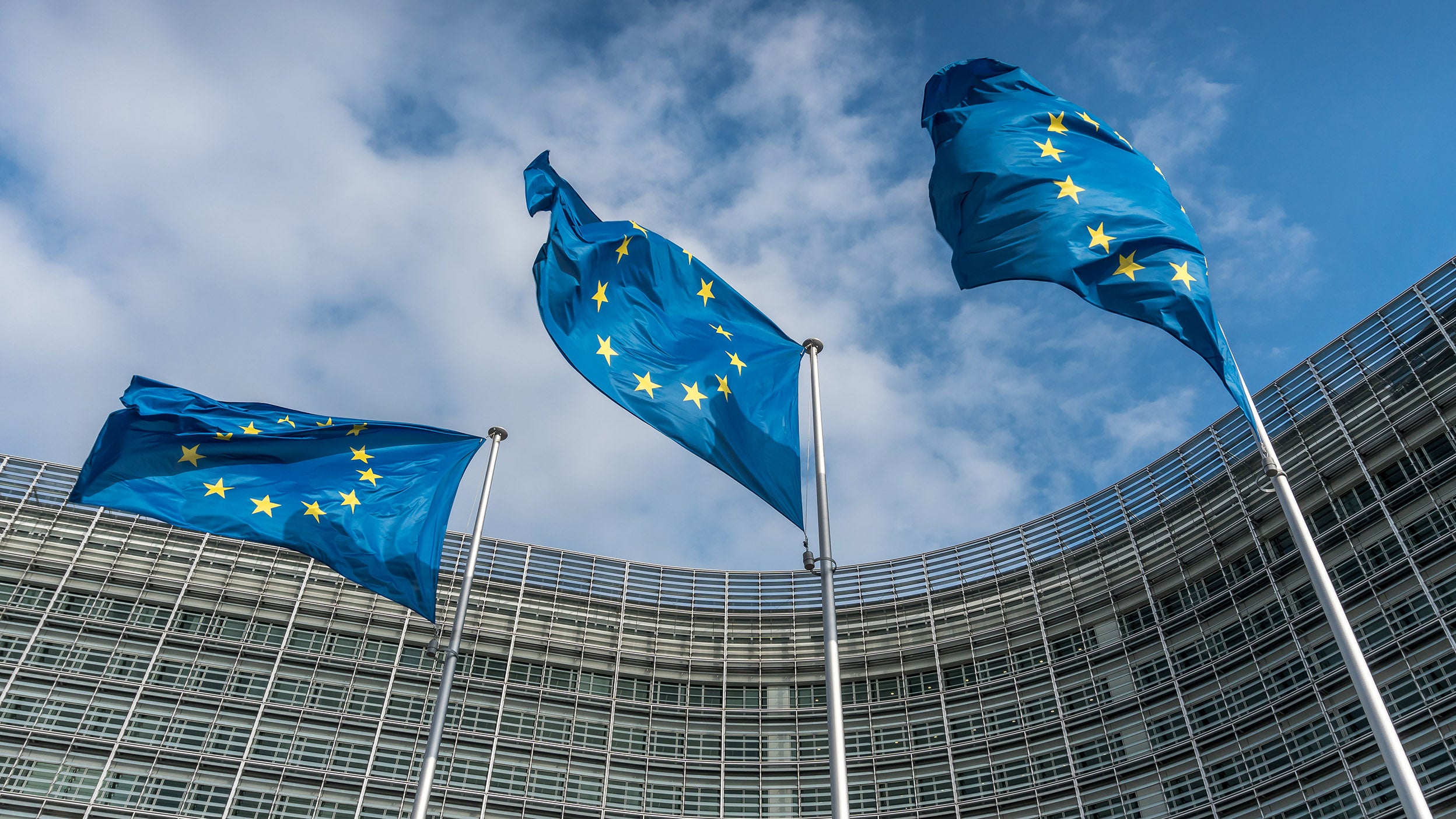
Markets and Economy European stock markets surge as US stock market sags
European nations prepare to invest in defense and infrastructure, while the US faces the possibility of recession brought on by government spending cuts.

While the job will be far from easy, I suspect the new prime minister’s government will have the markets’ confidence going forward.
Earnings season has been solid so far, but it’s early days, and I anticipate some disappointments ahead.
A market rally unfolded based on the hope that the U.S. Federal Reserve might soon pivot. But I don’t think the data backs up this optimistic view.
Continuing with a theme I’ve talked about in the last few weeks, global markets remain in a holding pattern on several key issues. But there are a few questions that have been answered in the past week.
In particular, there have been several geopolitical developments in the last seven days:
o China will continue to pursue its “China-style modernization” with an emphasis on technology, industrialization, and advanced manufacturing. I believe this should be a positive for the Chinese economy over the longer term.
o China will continue with its “Shared Prosperity” vision. This means there will be a sharper focus on increasing low-income households’ earnings in order to enlarge the middle class and enhancing households’ income from financial assets through various channels. I believe this also should be a positive for the Chinese economy.
o There were some leadership changes in the high ranks of government. Any change brings uncertainty, but there does seem to have been an extreme reaction to the news of those changes. I anticipate there will be heightened volatility in the near term as investors get comfortable with these leadership changes.
Earnings season has been solid so far, which has contributed to recent market optimism, but it is still early with only about 20% of companies in the S&P 500 having reported thus far.2 About 70% of companies have beaten earnings expectations (but for the most part those expectations had already been adjusted downward) and they have been concentrated in certain industries.2
I think going forward some companies will disappoint — so this should shape up to be a stock picker’s and sector picker’s earnings season. Some industries and companies can pass on costs to their customers and others cannot.
The big driver of U.S. markets — and to a large extent global markets — continues to be the U.S. Federal Reserve (Fed) and the anticipation of what it might do next.
A rally unfolded late last week as markets concluded that the Fed would soon pivot. San Francisco Fed President Mary Daly helped this view with her comments, explaining that “it's really challenging to step down right now ... We are not there yet.” However, she added that "the time is now to start talking about stepping down. The time is now to start planning for stepping down."3
I’m still scratching my head about this rally. I’ve been eagerly waiting for a Fed pivot for a while now — to say I would welcome one is an understatement — but I just don’t see it happening soon based on those comments. Daly told us what we already know; she wants to get away from 75 basis point hikes, but the data hasn’t supported it.
This is similar to the glimmer of hope we saw in the September Federal Open Market Committee meeting minutes: Several participants noted that “particularly in the current highly uncertain global economic and financial environment, it would be important to calibrate the pace of further policy tightening with the aim of mitigating the risk of significant adverse effects on the economic outlook.”4
The reality is that data has to cooperate, and it hasn’t yet. We just keep getting signs that the U.S. economy hasn’t sufficiently cooled. In earnings calls last week, more major airlines talked about strong demand that they believe will continue, and the CEO of a major bank shared, “Our U.S. consumer clients remained resilient with strong, although slower growing, spending levels and still maintained elevated deposit amounts.”5 Now that doesn’t mean the U.S. economy won’t cool rapidly given the dramatic series of rate hikes we’ve already experienced, but I suspect Fed officials will be some of the last to know.
I do believe that, whatever the terminal rate is, it won’t last long. The Fed will likely have to start cutting rates soon after it reaches the terminal rate — especially if the terminal rate is 5% or above. And that is perhaps the most positive thing I can say about this rate hike cycle.
In the short term, defensive parts of the market are likely to perform better, in my view. However, for investors with longer time horizons and cash on the sidelines, I believe it’s time to start at least thinking about dollar cost averaging into the market — and that goes for stocks, fixed income, and alternatives.
This week we will be hearing from the Bank of Canada and the European Central Bank. And we will be getting data that will help inform the Fed and Bank of England in their upcoming decisions in the following week. And, of course, I will be paying close attention to earnings.
This week’s schedule is tech-heavy in terms of earnings calls. Rising costs and the strong U.S. dollar are likely to provide the biggest headwinds. In my view, tech companies are more vulnerable than other sectors given their substantial exposure to foreign revenue. However, I will be most focused on the outlook — what companies are telling us about the fourth quarter and beyond.
Source: CNN, “Giorgia Meloni sworn in as Italy’s prime minister. Some fear the hard-right turn she’s promised to take,” Oct. 22, 2022
Source: FactSet Earnings Insight, as of Oct. 24, 2022
Source: Reuters, “Fed's Daly says it's time to start talking about slowing rate hikes,” Oct. 21, 2022
Source: U.S. Federal Reserve, minutes of the September Federal Open Market Committee meeting, Oct. 12, 2022
Source: Brian Moynihan, Bank of America earnings call, Oct. 17, 2022

European nations prepare to invest in defense and infrastructure, while the US faces the possibility of recession brought on by government spending cuts.

The US economy appears to be slowing quickly as consumers brace for tariffs, higher prices, and a possible government shutdown.

Unemployment concerns and rising inflation expectations contribute to falling US consumer sentiment, while the German election could be a positive catalyst for European equities.
NA2553481
Important information
Header image: xavierarnau / Getty
Some references are U.S. centric and may not apply to Canada.
This does not constitute a recommendation of any investment strategy or product for a particular investor. Investors should consult a financial professional before making any investment decisions.
All investing involves risk, including the risk of loss.
The Federal Open Market Committee (FOMC) is a 12-member committee of the Federal Reserve Board that meets regularly to set monetary policy, including the interest rates that are charged to banks.
A basis point is one hundredth of a percentage point.
The terminal rate is the anticipated level that the federal funds rate will reach before the Federal Reserve stops its tightening policy. The federal funds rate is the rate at which banks lend balances to each other overnight.
Dollar cost averaging is an investment technique of buying a fixed dollar amount of a particular investment on a regular schedule, regardless of the share price. The investor purchases more shares when prices are low and fewer shares when prices are high.
Many products and services offered in technology-related industries are subject to rapid obsolescence, which may lower the value of the issuers.
Fixed-income investments are subject to credit risk of the issuer and the effects of changing interest rates. Interest rate risk refers to the risk that bond prices generally fall as interest rates rise and vice versa. An issuer may be unable to meet interest and/or principal payments, thereby causing its instruments to decrease in value and lowering the issuer’s credit rating.
In general, stock values fluctuate, sometimes widely, in response to activities specific to the company as well as general market, economic and political conditions.
Alternative products typically hold more non-traditional investments and employ more complex trading strategies, including hedging and leveraging through derivatives, short selling and opportunistic strategies that change with market conditions. Investors considering alternatives should be aware of their unique characteristics and additional risks from the strategies they use. Like all investments, performance will fluctuate. You can lose money.
The opinions referenced above are those of the author as of Oct. 24, 2022. These comments should not be construed as recommendations, but as an illustration of broader themes. Forward-looking statements are not guarantees of future results. They involve risks, uncertainties and assumptions; there can be no assurance that actual results will not differ materially from expectations.
This link takes you to a site not affiliated with Invesco. The site is for informational purposes only. Invesco does not guarantee nor take any responsibility for any of the content.